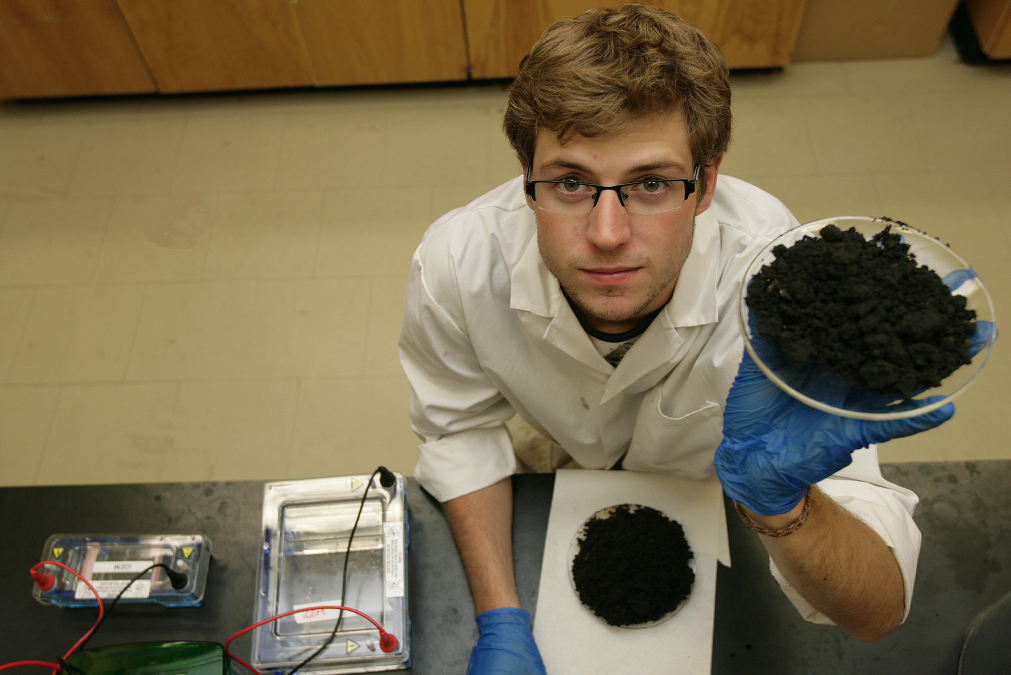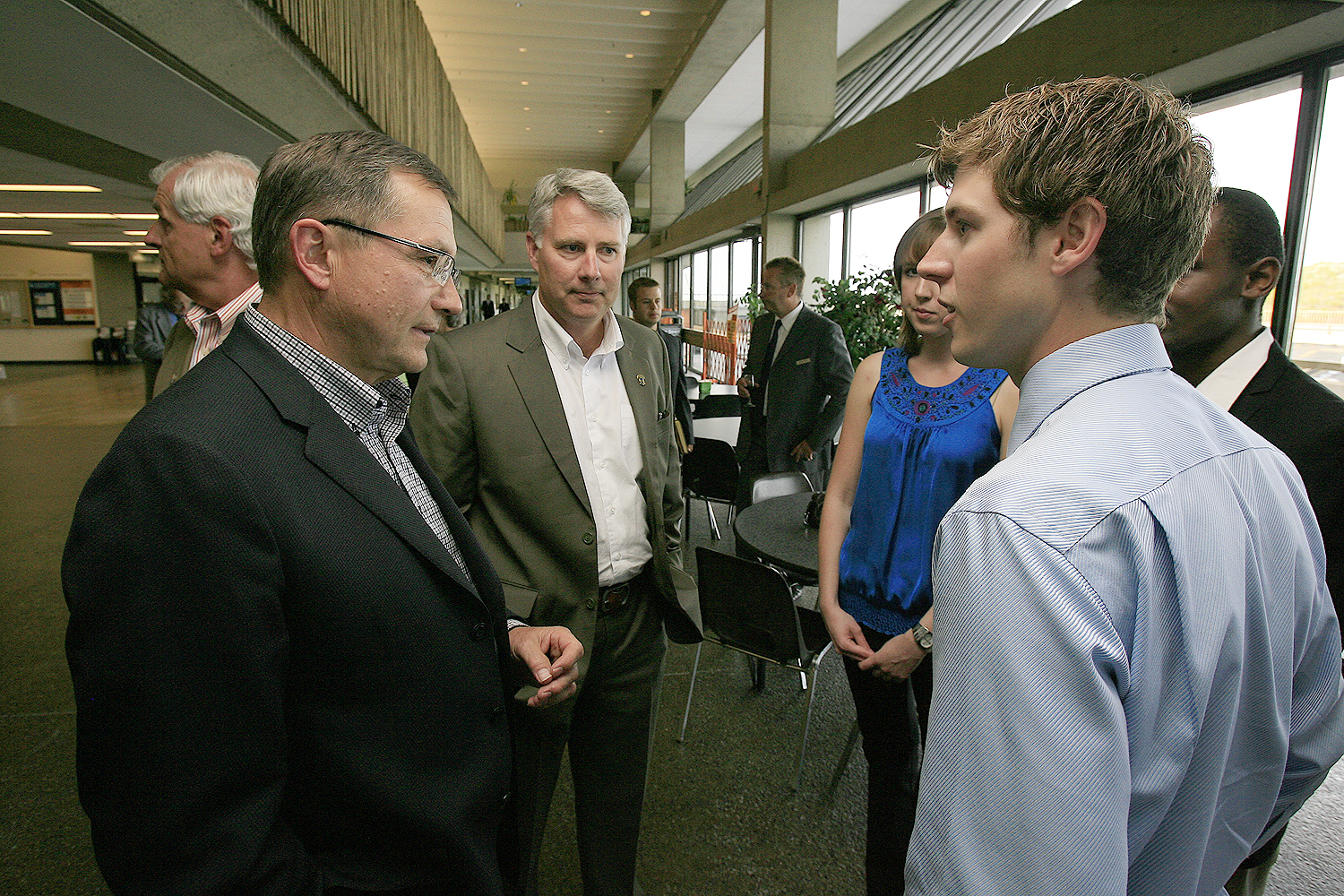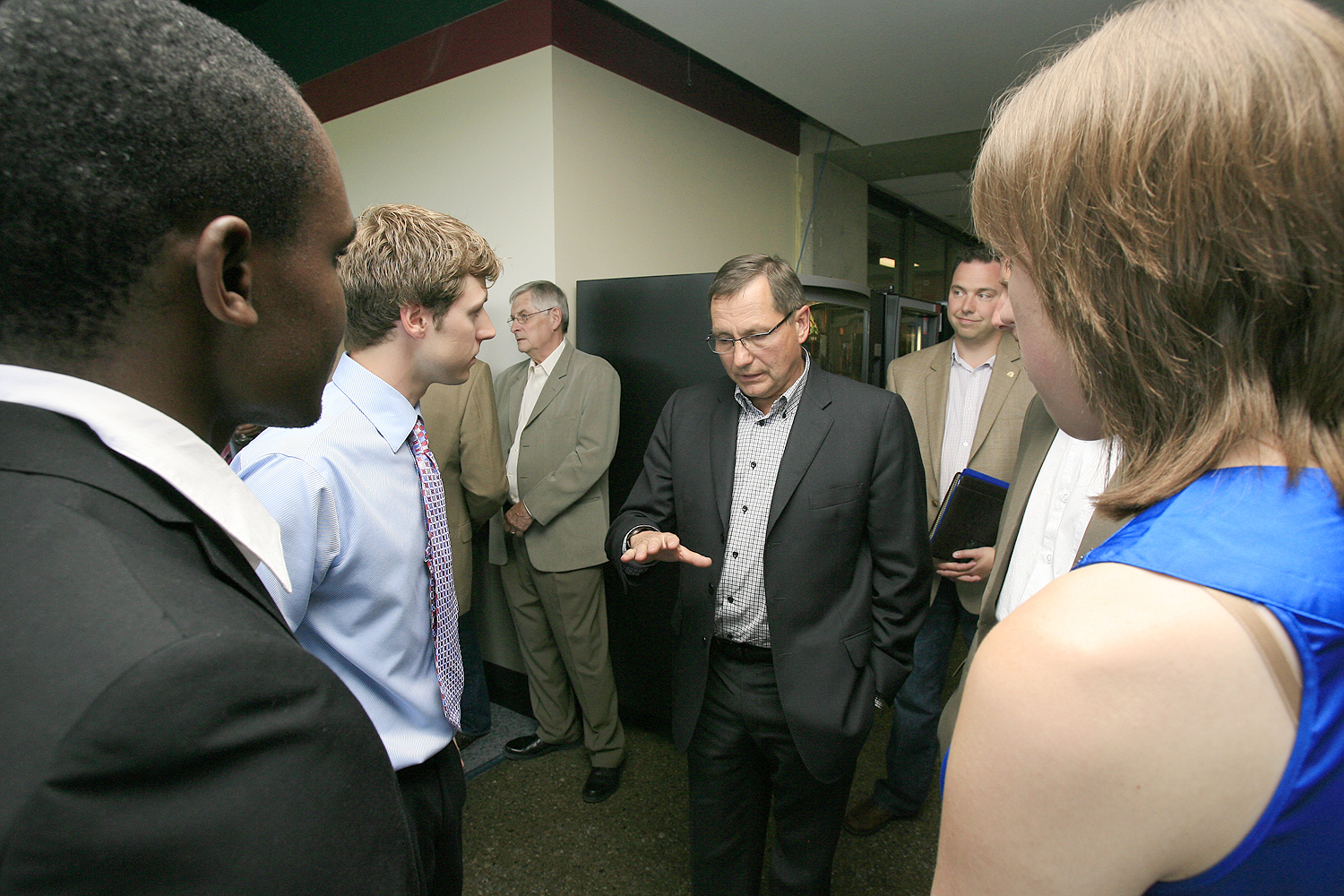Team:Lethbridge/News
From 2010.igem.org
JustinVigar (Talk | contribs) (→Oil Sands Tailings Pond Cleanup Funding Lands U of L Student iGEM Team $20,000) |
JustinVigar (Talk | contribs) (→Lethbridge Herald Front Page Top Story) |
||
| Line 109: | Line 109: | ||
==Lethbridge Herald Front Page Top Story== | ==Lethbridge Herald Front Page Top Story== | ||
| + | |||
| + | Bacteria with an appetite for oil<br> | ||
| + | Written by Caroline Zentner<br> | ||
| + | Thursday, July 15 2010, 10:29 PM<br> | ||
| + | |||
| + | A team of 11 undergraduate students at the University of Lethbridge is spending the summer on a project that could one day help clean up toxins in tarsands tailings ponds. | ||
| + | Their project involves creating an engineered bacteria with a propensity for munching on a compound in oilsands tailings ponds. They’re working feverishly to have the bacteria ready for the iGem (International Genetically Engineered Machine) competition held annually at the Massachusets Institute of Technology. This is the fourth time U of L team has entered the contest.<br> | ||
| + | |||
| + | Student teams are given a kit of biological parts in the summer. They use the parts and add new parts of their own design to build a biological system. About 180 teams are expected to participate in the championship jamboree in November.<br> | ||
| + | |||
| + | “It’s a really great opportunity for us,” said Justin Vigar, a fourth-year U of L biochemistry student and spokesman for the team. “Our plan was to degrade a compound in tailing pond water mainly because of the Oil Sands Initiative that came up. We need money to run this project.”<br> | ||
| + | |||
| + | The students wrote a grant proposal, created a project and succeeded in getting more than $40,000 from Alberta Innovates Technology Futures and another $20,000 from various oilsands companies sponsoring the Oil Sands Initiative. <br> | ||
| + | |||
| + | Working under the supervision of Hans-Joachim Wieden, U of L biochemistry professor, and a couple of graduate students, the students will be inserting a gene into a bacteria to create an organism that can survive in the tailing pond environment and break down the target compound to make it less toxic or even useful.<br> | ||
| + | |||
| + | “There are two problems with oil in general: how do you get it out of the ground and what is the byproduct of that? BP is actually a good example because things go wrong. It’s a human enterprise so things go wrong,” Wieden said. “What we are doing is essentially exploring a way of looking at alternatives to cleaning this stuff up.”<br> | ||
| + | |||
| + | “We all live in Alberta so it does hit us close to home,” Vigar said. “It is a big issue, especially with the oil spill in the Gulf. We’re noticing that it isn’t just an Alberta issue now, it’s very global so that’s making us feel even more important.”<br> | ||
| + | |||
| + | The student project falls in the area of a relatively new field called synthetic biology. Synthetic biology involves engineering a biological system, organism or metabolic pathway to do a function not normally seen in nature, Vigar said. He’s heard all the arguments against genetic engineering but he said the benefits are tremendous.<br> | ||
| + | |||
| + | “The industrial world has been messing with nature for hundreds of years with (carbon dioxide) and carbon emissions and pollution and even killing off species and endangered species. The playing-with-life thing is an issue. The good thing about synthetic biology is it’s carbon negative,” he said. “It is a touchy issue but it is well-regulated.”<br> | ||
==Board of Governors Dinner== | ==Board of Governors Dinner== | ||
Revision as of 18:05, 30 July 2010
Contents |
Oil Sands Tailings Pond Cleanup Funding Lands U of L Student iGEM Team $20,000
July 15, 2010
iGEM team member Justin Vigar displays a sample of oil sand which the group will be using, along with a sample of tailings pond water, to help refine a bacteria than can feed on petrochemical residue
A group of University of Lethbridge undergraduate chemistry, biochemistry and neuroscience students has been awarded an international research grant to help solve a challenge posed by a consortium of leading energy companies -- Find a biological solution to improve the environmental sustainability of Alberta’s oil sands bitumen extraction, upgrading and refining.
The students are members of the multiple-award-winning International Genetically Engineered Machines (iGEM) team at the U of L, and each year take on a synthetic biology research project which they present at an international competition held at the Massachusetts Institute of Technology (MIT) in Boston, MA.
The group was the only team in the iGEM world-wide membership to receive $20,000 from the Oil Sands Initiative (information attached, below) to study how a petrochemical-eating bacteria their group plans to design could be used to help clean up water in tailings ponds – a byproduct of the bitumen refining process in which water that cannot be recycled is deposited into large ponds to settle.
“As a team from Alberta, we know of the economic benefit that the oil sands have brought to the province,” team spokesperson Justin Vigar said. “Many members on our team have friends and family employed around the province in the energy industry."
"However, we are also aware of the environmental impact of the oil sands, specifically the tailings ponds. We feel it is important not only to clean the tailings ponds, but be able to extract the potential energy of the residue bitumen at the same time.”
Vigar added that the iGEM team has previously worked on many related projects, which gives them a significant advantage when facing this new challenge as the only iGEM group currently working on this unique approach to environmental cleanup.
“Our iGEM teams have designed a variety of synthetic biology components that all relate to this new project. One year, the team created a biological ‘switch’ that directed bacteria to move toward certain types of contaminants. The next year, we refined that to make the bacteria consume a specific chemical compound, then stop reproducing – we called it a ‘bacuum cleaner.’ Last year, we designed what we called ‘bio-batteries’ that use bacteria with photosynthetic properties to generate electrical currents.”
Vigar said that the group hopes to accomplish several things with their research. “We intend to create and characterize biological parts that can be used in the efforts of cleaning the tailings ponds, and those parts will be available to the general public for use in the future through the Registry of Standard Biological Parts housed at MIT.
The other benefit will be to the team members as they progress in their academic and post-university careers. “This experience will be extremely beneficial to enhance team members independent and critical thinking,“ Vigar said.
“As well, we learn how classroom knowledge can be directly applied in helping to solve everyday issues - specifically the application of Synthetic biology to ‘engineer’ solutions. There is also the potential to contribute to scientific papers -- which is rewarding and especially advantageous when applying for graduate studies, medical school, or jobs in the pharmaceutical industry.”
Vigar said the iGEM competition and running an independent research lab with undergraduate students in particular has given him and his team members a glimpse of what science can accomplish and how there are additional, and infinite possibilities through scientific advancement.
“iGEM has spurred our scientific creativity in what we can and cannot do, and has opened our eyes to not only the field of synthetic biology, but made us more aware of the research community in general.”
About the Oil Sands Initiative: https://2010.igem.org/Oil_Sands
A group of leading energy companies in Alberta are collaborating with the Institute for Sustainable Energy, Environment and Economy (University of Calgary) and the School of Energy & The Environment (University of Alberta) on a new iGEM initiative. Sponsorship is offered in iGEM's "Energy & Environment" track.
Teams were invited to submit iGEM project proposals especially in the area of biologically based solutions to improve the environmental sustainability of oil sands bitumen extraction, upgrading and refining, for either in situ or surface mining processes.
iGEM general information: https://2010.igem.org/About
Registry of Standard Biological Parts housed at MIT: http://www.partsregistry.org
--30 --
Contacts:
Bob Cooney, Communications Officer, Media Relations (403) 330-4609 cell phone/media calls e-mail: robert.cooney@uleth.ca
iGEM spokesperson Justin Vigar (403) 795-1098 Cell E-mail: justin.vigar@uleth.ca IGEM Team website: https://2010.igem.org/Team:Lethbridge
Dr. Hans-Joachim Wieden, (Chemistry and Biochemistry) iGEM Team Supervisor
(403) 329-2303
E-mail: hj.wieden@uleth.ca
Lethbridge Herald Front Page Top Story
Bacteria with an appetite for oil
Written by Caroline Zentner
Thursday, July 15 2010, 10:29 PM
A team of 11 undergraduate students at the University of Lethbridge is spending the summer on a project that could one day help clean up toxins in tarsands tailings ponds.
Their project involves creating an engineered bacteria with a propensity for munching on a compound in oilsands tailings ponds. They’re working feverishly to have the bacteria ready for the iGem (International Genetically Engineered Machine) competition held annually at the Massachusets Institute of Technology. This is the fourth time U of L team has entered the contest.
Student teams are given a kit of biological parts in the summer. They use the parts and add new parts of their own design to build a biological system. About 180 teams are expected to participate in the championship jamboree in November.
“It’s a really great opportunity for us,” said Justin Vigar, a fourth-year U of L biochemistry student and spokesman for the team. “Our plan was to degrade a compound in tailing pond water mainly because of the Oil Sands Initiative that came up. We need money to run this project.”
The students wrote a grant proposal, created a project and succeeded in getting more than $40,000 from Alberta Innovates Technology Futures and another $20,000 from various oilsands companies sponsoring the Oil Sands Initiative.
Working under the supervision of Hans-Joachim Wieden, U of L biochemistry professor, and a couple of graduate students, the students will be inserting a gene into a bacteria to create an organism that can survive in the tailing pond environment and break down the target compound to make it less toxic or even useful.
“There are two problems with oil in general: how do you get it out of the ground and what is the byproduct of that? BP is actually a good example because things go wrong. It’s a human enterprise so things go wrong,” Wieden said. “What we are doing is essentially exploring a way of looking at alternatives to cleaning this stuff up.”
“We all live in Alberta so it does hit us close to home,” Vigar said. “It is a big issue, especially with the oil spill in the Gulf. We’re noticing that it isn’t just an Alberta issue now, it’s very global so that’s making us feel even more important.”
The student project falls in the area of a relatively new field called synthetic biology. Synthetic biology involves engineering a biological system, organism or metabolic pathway to do a function not normally seen in nature, Vigar said. He’s heard all the arguments against genetic engineering but he said the benefits are tremendous.
“The industrial world has been messing with nature for hundreds of years with (carbon dioxide) and carbon emissions and pollution and even killing off species and endangered species. The playing-with-life thing is an issue. The good thing about synthetic biology is it’s carbon negative,” he said. “It is a touchy issue but it is well-regulated.”
 "
"
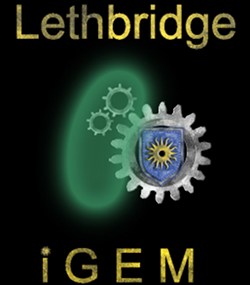
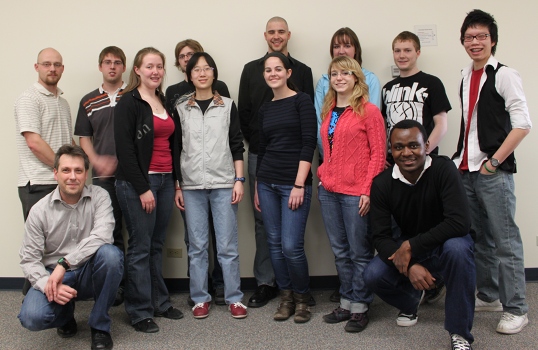
 ]
]
 ]
]
 ]
]
 ]
]
 ]
]
 ]
]
 ]
]
 ]
]
 ]
]
